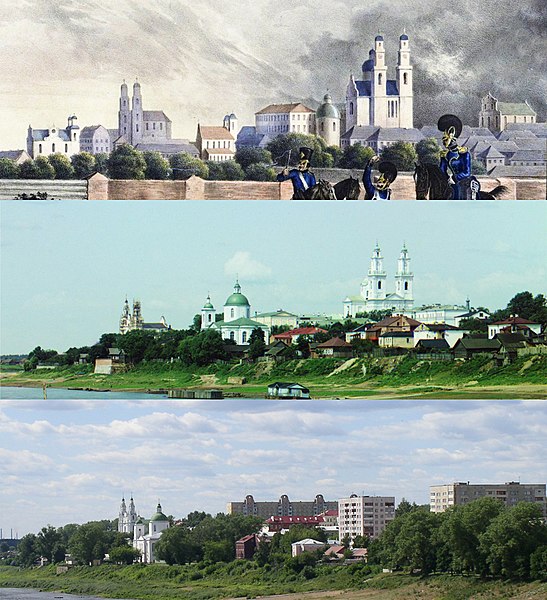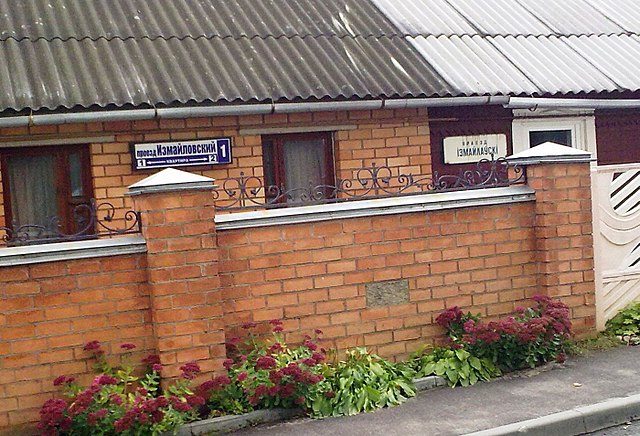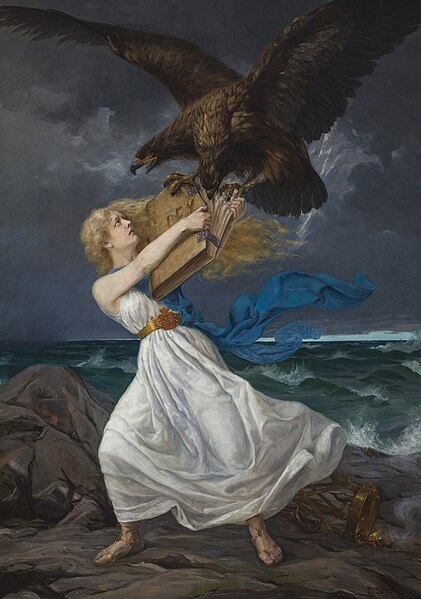Russification, or Russianization, is a form of cultural assimilation in which non-Russians, whether involuntarily or voluntarily, give up their culture and language in favor of the Russian culture and the Russian language.
Cityscape of Polotsk from 1812, 1912 and 2006. The majority of historical buildings in Belarus built during the Grand Duchy of Lithuania and the Polish-Lithuanian Commonwealth were demolished by Tsarist and Soviet authorities.[citation needed]
A remnant of linguistic Russification in Latvia – a Soviet bilingual (Latvian-Russian) street sign in Rēzekne in 2011
Minsk, Belarus, 2011: old street sign in Belarusian (right) replaced with new one in Russian (left).
The Attack (Hyökkäys), an 1899 oil painting by Edvard Isto, depicting the Russification of Finland as a double-headed eagle.
Sovietization is the adoption of a political system based on the model of soviets or the adoption of a way of life, mentality, and culture modeled after the Soviet Union. This often included adopting the Cyrillic script and sometimes also the Russian language.
Latvian National Theatre decorated with Soviet symbols (hammer and sickle, red star, red flags and a double portrait of Vladimir Lenin and Joseph Stalin) after the Soviet occupation in 1940. The text on top reads "Long live the USSR!"





